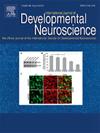Electromagnetic Interaction Algorithm (EIA)-Based Feature Selection With Adaptive Kernel Attention Network (AKAttNet) for Autism Spectrum Disorder Classification
Abstract
Background and Objective
Autism spectrum disorder (ASD) is a complex neurological condition that impacts cognitive, social and behavioural abilities. Early and accurate diagnosis is crucial for effective intervention and treatment. Traditional diagnostic methods lack accuracy, efficient feature selection and computational efficiency. This study proposes an integrated approach that combines the electromagnetic interaction algorithm (EIA) for feature selection with the adaptive kernel attention network (AKAttNet) for classification, aiming to improve ASD detection performance across multiple datasets.
Methods
The proposed methodology consists of two core components: (1) EIA, which optimises feature selection by identifying the most relevant attributes for ASD classification, and (2) AKAttNet, a deep learning model leveraging adaptive kernel attention mechanisms to enhance classification accuracy. The framework is evaluated using four publicly available ASD datasets. The classification performance of AKAttNet is compared against traditional machine learning methods, including logistic regression (LR), support vector machine (SVM) and random forest (RF), as well as competing deep learning models. Statistical evaluation includes precision, recall (sensitivity), specificity and overall accuracy metrics.
Results
The proposed model outperforms conventional machine learning and deep learning approaches, demonstrating higher classification accuracy and robustness across multiple datasets. AKAttNet, combined with EIA-based feature selection, achieves an accuracy improvement ranging from 0.901 to 0.9827, Cohen's kappa values between 0.7789 and 0.9685 and Jaccard similarity scores from 0.8041 to 0.9709 across four different datasets. Comparative analysis highlights the efficiency of the EIA algorithm in reducing feature dimensionality while maintaining high model performance. Additionally, the proposed method exhibits lower computational time and enhanced generalizability, making it a promising approach for ASD detection.
Conclusions
This study presents a practical ASD detection framework integrating EIA for feature selection with AKAttNet for classification. The results indicate that this hybrid approach enhances diagnostic accuracy while reducing computational overhead, making it a promising tool for early ASD diagnosis. The findings support the potential of deep learning and optimisation techniques in developing more efficient and reliable ASD screening systems. Future work can explore real-world clinical applications and further refinement of the feature selection process.


 求助内容:
求助内容: 应助结果提醒方式:
应助结果提醒方式:


